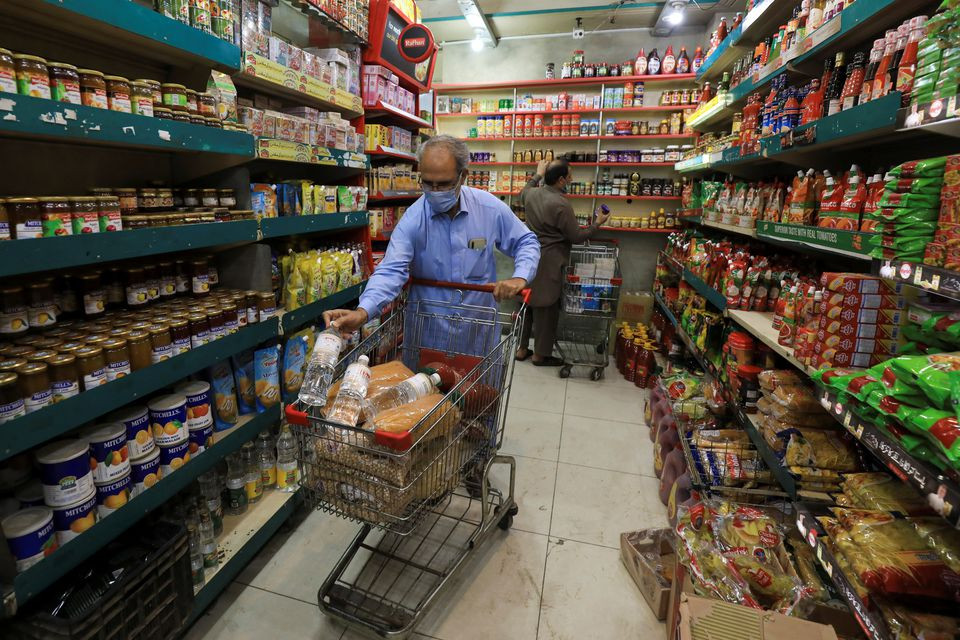
ISLAMABAD:The Ministry of Finance on Monday painted a rosy picture of the country’s economy estimating the average monthly growth at around 5% during the first five months of the current fiscal year 2021-22 despite inflationary pressures and consequent tightening of policies.
According to the average Monthly Economic Indicator (MEI) report issued by the finance ministry, there is demand for Pakistani exports by the trading partners despite the spread of Omicron – the new Covid-19 variant. “But we should also not ignore the impending risks including the concerns of the policymakers about the inflationary effects and the resulting policy response,” it cautioned.
However, it said the inflation may ease out in the coming months due to the declining commodity prices in the global market. In addition, relief may also come from continuous government efforts to soften food prices in the local markets by following appropriate fiscal and monetary policies.
While these developments and policies may keep the monthly price dynamics in check, the current stress on the trade balance is expected to soften, easing exchange rate pressure and subsequently stabilising the month on month (MoM) inflation.
The MEI is based on combining monthly data of indicators that are correlated with the gross domestic product (GDP) at constant prices. “Since March 2021, the MEI is on a higher level as compared to the previous months.”
This is based on observed favourable movements in macroeconomic high frequency indicators such as growth in LSM, recovery in Pakistan’s main trading partners and strong growth in imports of capital goods. The momentum in the economic dynamism observed in recent months supported economic activity in November.
According to balance of payment data, exports of goods and services increased by around 13 per cent in November as compared to October.
They have now settled well above the $3 billion mark and are expected to climb further in coming months so as to reach a new higher level. This strong export performance is the result of several positive factors.
First, although the cyclical position in the main trading partners (as witnessed by the CLI) seems to stabilise, the underlying growth trend in those countries remains very strong, following the recovery in their potential output growth.
Second, Pakistan’s real effective exchange rate has been improving significantly in recent months.
Third, the domestic economic dynamism remains strong.
Fourth, specific government policies to stimulate exports are bearing fruit, it said, adding that the main risk factor here is the appearance of a new Covid-19 variant, of which the effects on economic activity are still unknown.
The data indicated that imports of goods and services increased about 5% in November compared to October.
Strong domestic economic dynamism requires imported energy, capital goods and intermediate goods, necessary in the production process. Further, recent increase in international commodity prices have inflated the cost of these imported goods.
However, imports may settle at lower levels gradually in the coming months, it predicted. “Imports are indeed expected to react to higher domestic interest rates, given the historically observed negative interest rate effect on import demand.”
The government continues to implement measures to curb unnecessary imports and to supply domestic alternatives in some markets, especially food products. Also, the baseline scenario is based on a downward correction of international commodity prices. The report added that on the basis of these events, the trade deficit will stabilise in coming months.
The expected developments in export and import activities imply that the trade balance may gradually improve in coming months and settle down at significantly lower levels in the second half of the current fiscal.
Assuming stable remittance inflows, the expected improvement in the trade balance will be reflected in declining current account deficits, such that these deficits remain manageable and finance able.
The government’s fiscal consolidation efforts are paying off in terms of improved fiscal accounts. During Jul-Oct FY2022, the growth in net federal revenues outpaced the growth in expenditures. Resultantly, the fiscal deficit has been brought down to 1.1 per cent of GDP during the first four months of FY2022 against 1.7 per cent of GDP in the same period last year.
With prudent expenditure management and an effective revenue mobilisation strategy, it is expected that the overall fiscal deficit would remain within the reasonable level.
The Federal Board of Revenue tax revenues are performing remarkably well and continue to surpass its revenue target during the first five months of the current fiscal year.
It showed that the FBR was well on its way to achieve the assigned target for FY2022.
This is evidenced by the fact that net federal revenue receipts climbed by 17.4% to Rs 1.2 trillion in July-October period- up from Rs 1.1 trillion during the same period last year. There was a significant rise of 36.7% increase in FBR tax and 5.4% increase in non-tax collection.
Total expenditures, on the other hand, increased by 11.7 to Rs 2.2 trillion in July- October of this fiscal year, compared to nearly Rs2 trillion last year. The increase has been witnessed owing to 8.5% increase in current expenditures and 55.6% growth in PSDP spending.
Consequently, the overall fiscal deficit reduced to 1.1% of GDP Rs587 billion in the first four months of FY2022, down from 1.7% or Rs775 billion recorded in the comparable period of last year. However, the ministry did not give the federal budget deficit figure, which is the real barometer of the public finances.






